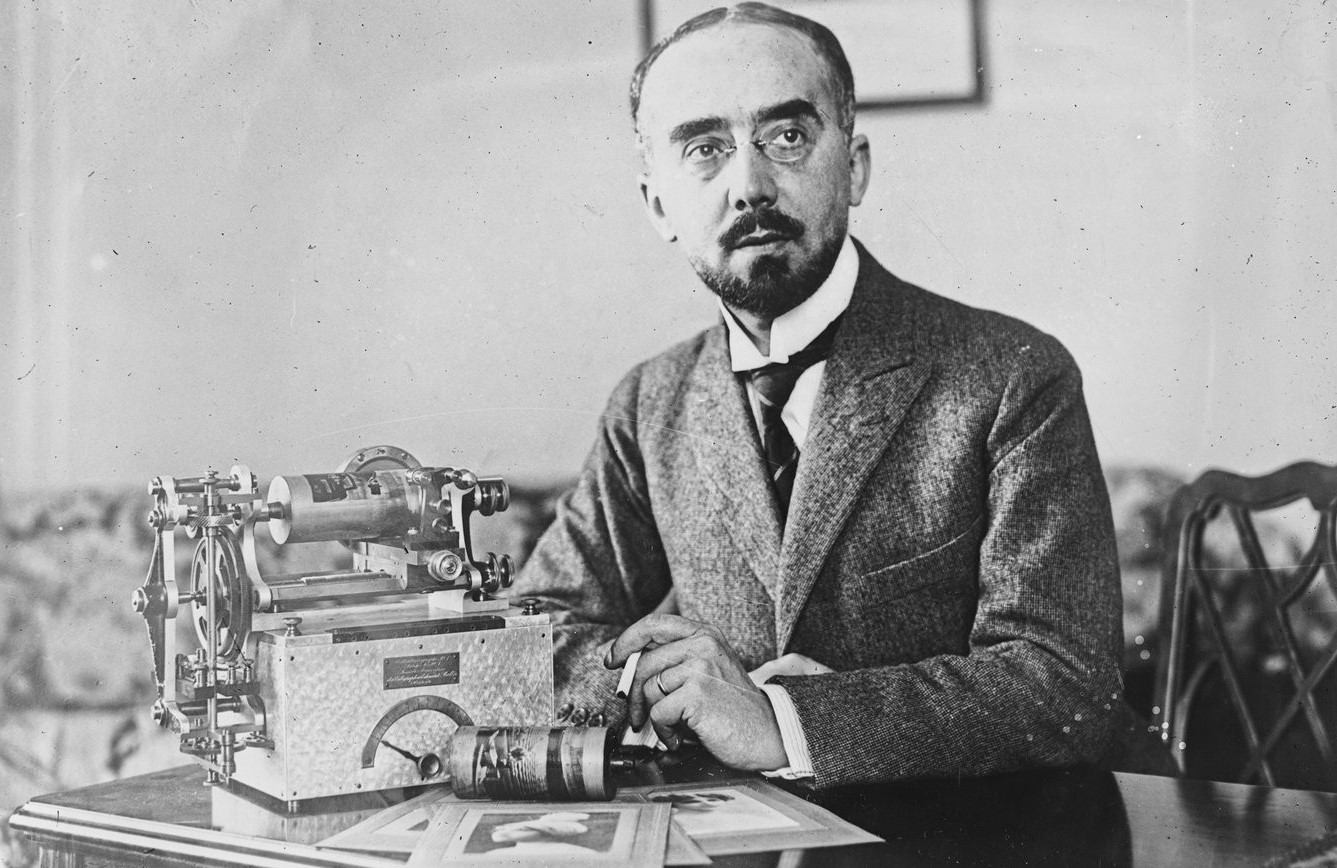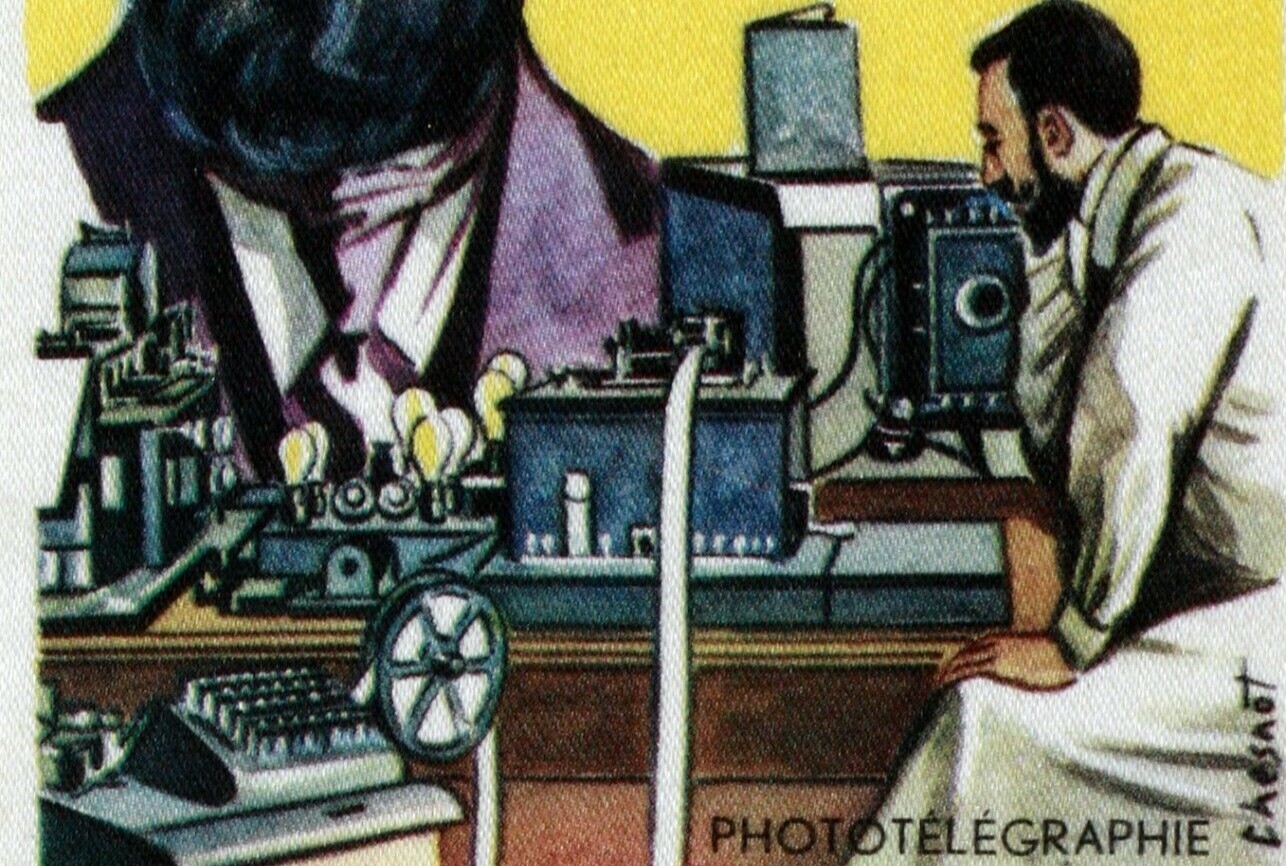The inventor who managed to send photos via phone lines: Who is Edouard Belin?
The idea of transmitting still images such as writing, painting, and photography to a distant receiver was born in the 19th century, especially after the invention of the telegraph. But it was Edouard Belin who succeeded:

(1876-1963) French engineer. He became one of the first practitioners of today's telephoto technique by realizing the belinograph device named after him. He was born on March 5, 1876, in Vesoul, the center of the Haute-Saöne administrative district. Evaluating his previous works, he developed the device called the belinograph in 1907, and in the same year he succeeded in sending photos via telephone lines from Paris to Lyon and from there to Bordeaux, realizing the first telephoto communication between long distances. He then moved on to commercial production of the belinograph, establishing a laboratory in Rueil-Malmaison, and in 1921 provided the first transoceanic telephoto link between his laboratory in France and the city of Annapolis in the USA. Belin, whose system was adopted by almost all European countries within a few years, died on March 4, 1963, in Territet, Switzerland.
The idea of transmitting still images such as writing, painting, and photography to a distant receiver was born in the 19th century, especially after the invention of the telegraph. British chemist Hunphry Davy and Scottish electrical engineer Alexander Bain (1810-1877), investigated the electrochemical aspects of the technique until they came to Belin, Italian Giovanni Caselli (1815-1891), who made the first application trials, British F C Bakewell, Elisha Gray (1835- 1901), British Edward Alfred Cowper, and German physicist Arthur Korn (1870-1945) were pioneers in this field. Indeed, Davy's statement that certain chemicals, such as potassium iodide, decompose and change color with electric current, inspired Bain in 1843 to adapt this electrochemical method to the telegraph. However, it was Caselli and Bakewell who made the first mechanisms that could transmit an image to a certain distance by applying this idea. In Caselli's pantelegraph, all the teeth of a comb-shaped arm that made up the transmitter were connected by electrical wires to the teeth of a second comb on the receiver, and as the donor comb moved over the raised letters, the electric current passed to the receiving comb, making the same marks on paper impregnated with a chemical liquid. This method, which was first put into practice between Paris and Lyon on February 16, 1865, was used for a long time for text transmission.

On the other hand, Bakewell in England, again starting from Bain's thought, made the facsimile telegraph device in 1850. In this device, the desired shape is drawn with a special pen dipped in an insulating material on an electrically conductive foil wrapped around a rotating cylinder; A tip connected to an electric current was scanning this cylinder and leaves marks on the chemical-impregnated paper wrapped around the cylinder in the receiver, darkening the points where the current passed. By 1895, Gray in the USA and Cowper in England realized the teletograph, which transmits the motion of the pen or the writing tip, which scans the image to be transmitted, into electrical signals and transmits it to the receiver, almost at the same time. A few years later, Korn laid the foundation for today's telephoto technique in 1903, by applying the optical scanning method to Bakewell's system, which scans the image via electricity and using a photocell.
Belin's device is also completely based on Bakewell's principle and Korn's photocell mechanism. A light beam is sent to a photocell after successively scanning very small areas of the photograph wrapped around the cylinder at short intervals of time: the light whose intensity changes according to the light-darkness degree of each scanned spot also changes the amplitude of the carrier current at a frequency of 1500 Hz applied to the photocell. When this modulated current is transmitted to the receiver by wire (telephoto) or radio waves (radiophoto), every point of the image appears in the same darkness on the photosensitive paper at the receiver.
Since it was not possible to transmit Chinese script with Morse code, belinograph started to be used in telegraph communication in China after 1925. Then, in 1928, the Scottish daily The Scotsman set up belinographs in their London and Edinburgh offices. By the 1940s, the entire European press was equipped with a telephoto network.
